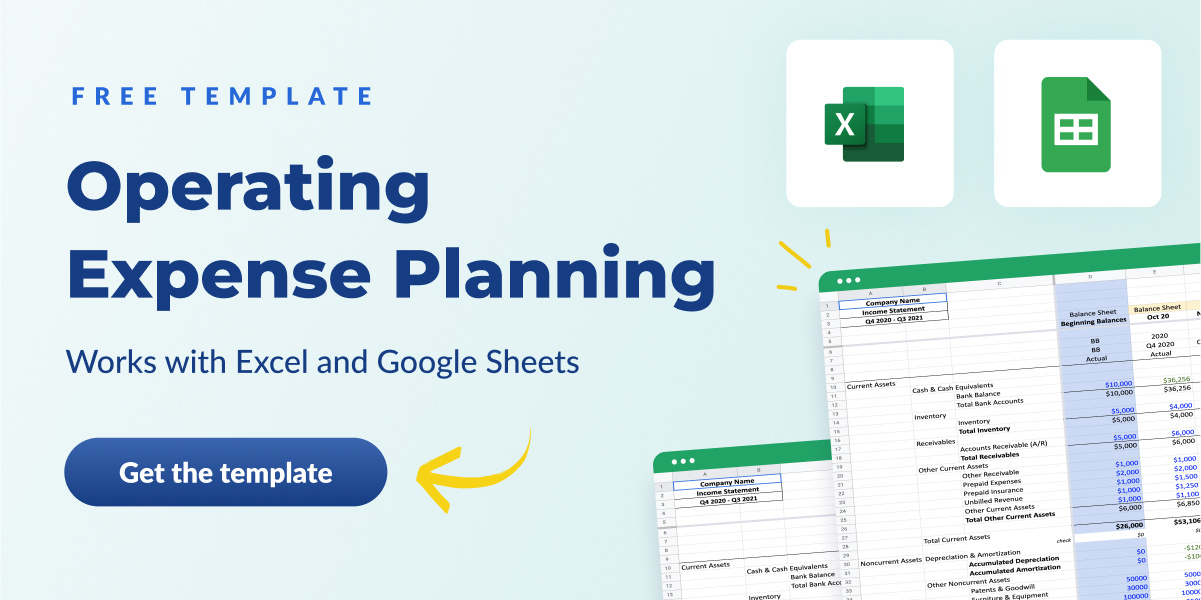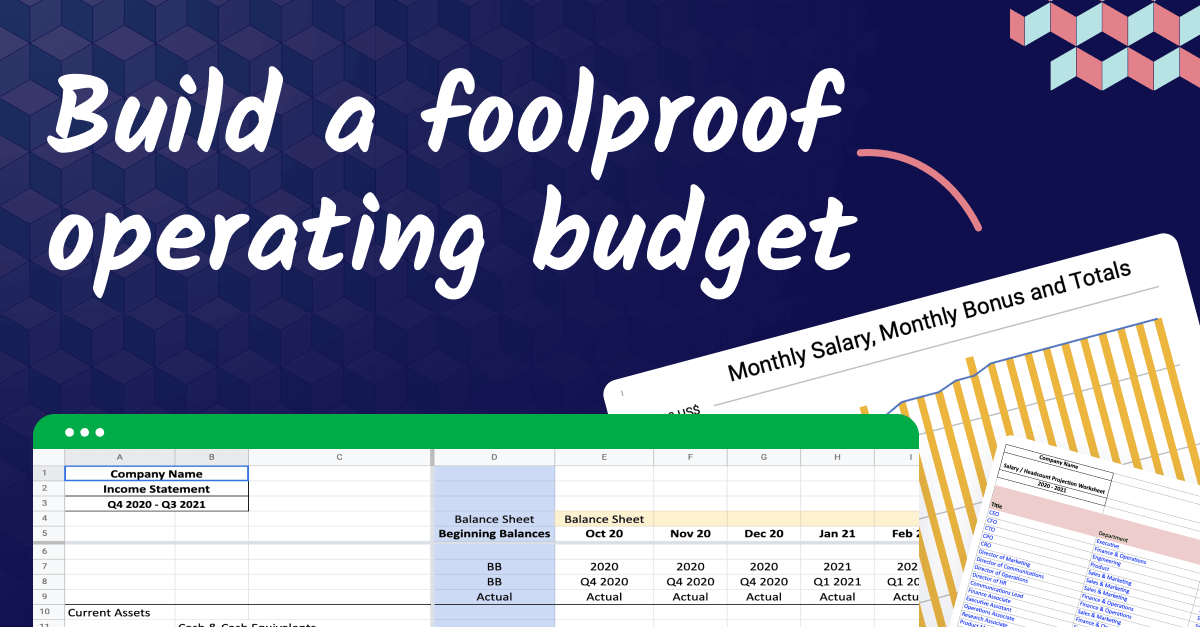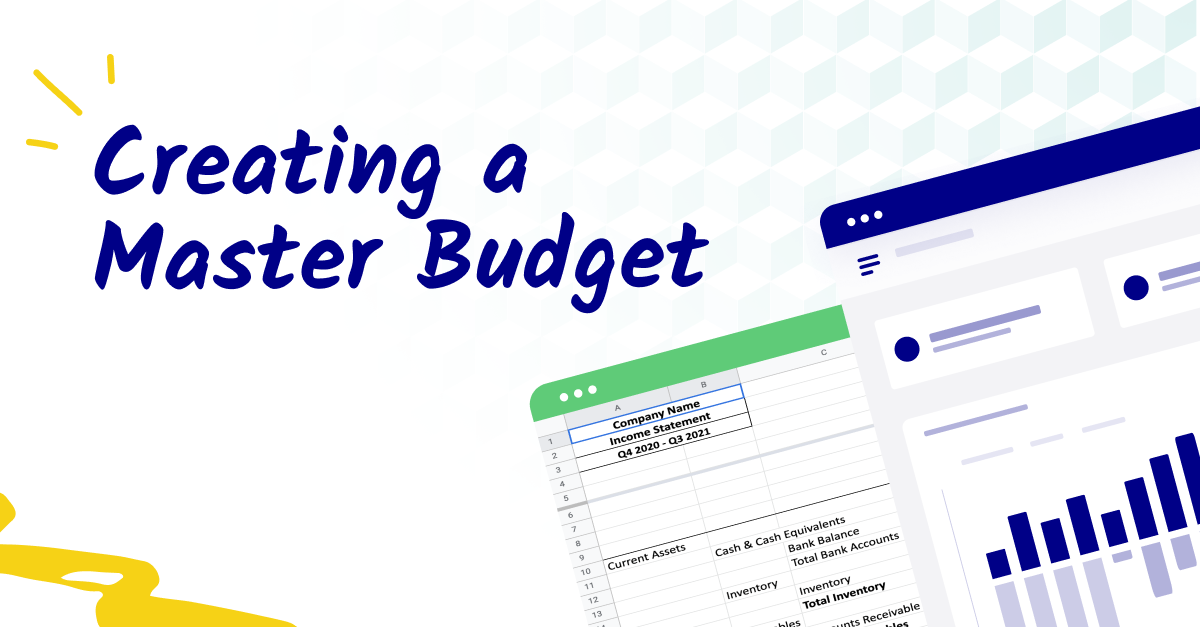What is an operating budget?
An operating budget is a financial plan that FP&A teams use to manage a company’s revenue and expenses throughout the year.
Operational budgets estimate the day-to-day operations of the business, covering expenses such as rent, utilities, wages, and other supplies. The operational budget guides how money should be allocated and spent, tracks where resources are going, and identifies areas for potential cost savings.
Operational planning becomes much more complex as an organization grows and expands. For example, it may become necessary to incorporate additional departments, regions, or product lines into the annual planning process over time.
Since the FP&A team plays a vital role in the operational planning process, FP&A leaders are faced with their own set of challenges relating to strategic alignment, optimal resource allocation, risk management, etc.
Factoring these challenges into the operating budget is crucial to ensure your company hits its numbers. This means fine-tuning current budgeting techniques, as well as adjusting various steps in the budgeting process to account for these new factors.

How is the operating budget related to a capital improvements plan (CIP)?
A capital improvement plan (CIP), or capital improvements program, is a long-term strategy for managing capital assets.
It outlines how money is invested in projects that improve existing infrastructure, such as building repairs, upgrades to equipment, production expansion, and projects that involve acquiring new assets. These improvements help businesses remain competitive, increase efficiency, and create new revenue streams.
A CIP also encourages businesses to plan ahead and allocate resources to ensure they have the necessary capital available when needed.
The operational budget is an integral part of the CIP. It shows how much money the organization has to invest in its projects, as well as how much of that investment should be allocated to long-term goals (such as those outlined in the CIP).
A well-crafted operational budget also factors in costs associated with capital improvements, such as labor, materials, and equipment. This ensures that funds are available when needed and that a business can effectively manage its investments over the long term.
By considering both short- and long-term objectives, organizations safely grow while maintaining strong support for daily operations.
What are the benefits of building a strong operating budget?
Your operational budget acts as the proverbial headlights lighting the road ahead. It provides guidance for allocating precious resources and helps visualize your cash needs in advance.
It’s an essential part of your financial planning and offers many benefits to growing companies, such as:
Increased savings: The operational budget provides a detailed view of your current liabilities and income. This helps companies identify areas for potential cost savings, giving them more opportunity to put money towards other investments.
Financial discipline and strategic resource allocation: A clear picture of expenses helps protect against overspending within a specific department or category. It gives managers numbers to aim for and provides parameters for investment over the coming period.
Performance monitoring and timely corrective action: Operating budgets provide the necessary structure to track and monitor finances, ensure accuracy, and prevent misallocation of funds. It also informs end-of-year reporting and performance management for departments and managers.
Greater transparency amongst stakeholders: Creating an operating budget gives team members a better understanding of the company’s financial situation and how it influences their decisions and actions.
What are the components of an operating budget?
Operational budgets capture every aspect of the daily operating expenses within a company. When building an operating budget, be sure to include the following:
Revenue
Revenue is typically the biggest driver of an operating budget, as it forms the basis for determining the financial resources available to your company. Revenue projections provide a realistic framework for aligning resources, setting goals, and driving financial success.
Variable costs
Variable costs change from month to month and can include purchases such as supplies, equipment repairs, and other items that support business operations. As the volume of business increases or decreases, these expenses will adjust accordingly.
Certain variable expenses can be difficult to predict, making it important to budget with some built-in flexibility for these items. Having a buffer prevents businesses from exceeding their allocated budget and incurring additional costs.
Fixed costs
Fixed expenses are bills that don’t change significantly from month to month. Including fixed costs in the budget allows you to forecast and allocate resources necessary to cover essential expenses such as rent, insurance premiums, loan repayments, equipment leases, and other recurring payments. Since they’re predictable, fixed costs are easy to budget for.
Non-cash expenses
Non-cash expenses are budget items that don't require cash outflow, such as depreciation (losses due to wear and tear), amortization (intangible asset costs spread out over the life of a loan), stock-based compensation, asset impairment, and debt default write-downs.
Including these expenses in the operating budget helps provide a more accurate picture of the company's profitability, cash flow, and financial performance.
Non-operating expenses
Non-operating expenses are costs that don’t relate to core business activities. They include expenses like interest payments, restructuring costs, asset devaluation, and inventory write-downs.
Capital costs
Capital costs are expenses related to long-term investments, such as machinery, buildings, or technology. Capital expenditures typically require a significant upfront payment and may take several years to pay off.
Capital costs generally appear on a budget broken down into depreciation, amortization, and other long-term liabilities. Budgeting for capital expenditures should include potential future maintenance costs on associated physical assets.
Steps to build a solid operating budget
When fine-tuning your current budgeting practices, be sure to follow these steps to capture all the necessary data and spot areas for improvement.
1. Estimate revenue
When estimating the revenue for your business, consider both your short- and long-term goals. Start with a reasonable calculation of gross sales for the coming period.
Gross sales refer to the total amount of sales without any deductions. To calculate your gross sales, simply multiply the number of units you've sold by the unit price.
Be sure to consider any discounts or special offers that might impact those figures. Then, use these figures to estimate the net profits you can expect.
Stay conservative in your estimates, but remember that even small increases can result in bigger profits over time. Once you have a good idea of the revenue you expect to generate, plan how those funds will be allocated throughout the business.
2. Identify monthly expenses
Identify the various expenses that must be paid each month. This includes fixed and variable costs for every aspect of the business.
It’s important to ensure you capture all the details in these areas, as any overlooked costs can significantly impact your operating budget.
Be sure to review past budgets, expense reports, and historical spending to gain insight into where money is being spent. This makes it easier to decide how it should be spent. Also, don't forget to look for patterns, seasonality, and any significant fluctuations in expenditure.
Once all expenses have been identified, you can sort them into categories such as people costs, utilities, rent, supplies, marketing, and travel.
3. Outline your income sources
Income is the fuel of your business, so be sure to include every source of cash flowing in.
Include sales revenue, service fees, subscription fees, licensing fees, royalties, or any other revenue streams specific to your business. Depending on your business structure, there may be additional one-time revenues from investments or local or federal government grants.
Next, classify the income sources into relevant categories for a structured overview of the different sources contributing to your overall income.
4. Calculate fixed costs and overhead
Fixed costs are payments that stay the same every month. Some examples of fixed costs include items like:
- Leases or payments on real estate
- Fixed equipment loans or leases
- Bank loans with fixed terms
- Payments on business lines of credit
- Salaries and wages
- Insurance premiums
Fixed costs are part of the overhead associated with running your business. The benefit of fixed costs is that they’re predictable and easy to track in an operating budget.
Calculating fixed costs is simple: just tally your fixed costs, add them up, and you have your total fixed costs.
5. Estimate variable costs
Estimate the variable expenses you reasonably expect during the budgeting period (a month, a quarter, or a fiscal year depending on your budgeting style).
This includes the cost of materials you need to make or sell your products, shipping expenses, advertising and marketing fees, and other miscellaneous expenses that may result from running the business. Factor in taxes or government fees that may apply.
6. Identify one-time expenditures
List any one-off purchases on the horizon. This includes the cost of equipment, furniture, supplies, licenses, and other necessary one-time items. Also, factor in the money needed for legal fees or professional services such as accounting, marketing, consulting, etc.
Be sure to conduct a thorough needs assessment. Evaluate any future requirements and plans to identify unique expenses that may arise. This may include one-time investments in research and development or major organizational changes.
7. Calculate vendor costs
A thorough evaluation of vendor pricing and terms will help you make informed decisions, allocate resources appropriately, and maintain financial stability as your business continues to expand.
This process involves identifying vendor needs, requesting quotes, analyzing pricing structures, considering the total cost of ownership, and comparing and negotiating vendor costs. Once you’ve determined vendor costs, you can incorporate them into your operating budget.
Want even more tips for fine-tuning your operating budget as your business grows? Download our comprehensive guide, Building a foolproof operating budget.
Conclusion: build a bulletproof budget
A solid operating budget is essential for a company to function properly, prevent overspending, and remain on track to achieve its goals. Following the steps above is a surefire way to avoid skipping key components while building (and fine-tuning) an operating budget.
Want to learn how you can simplify the budgeting process even further? Request a free demo today to see how Cube can help you build your budget in less time and set your business up for success.



.png)









.png)





.webp)
.png)